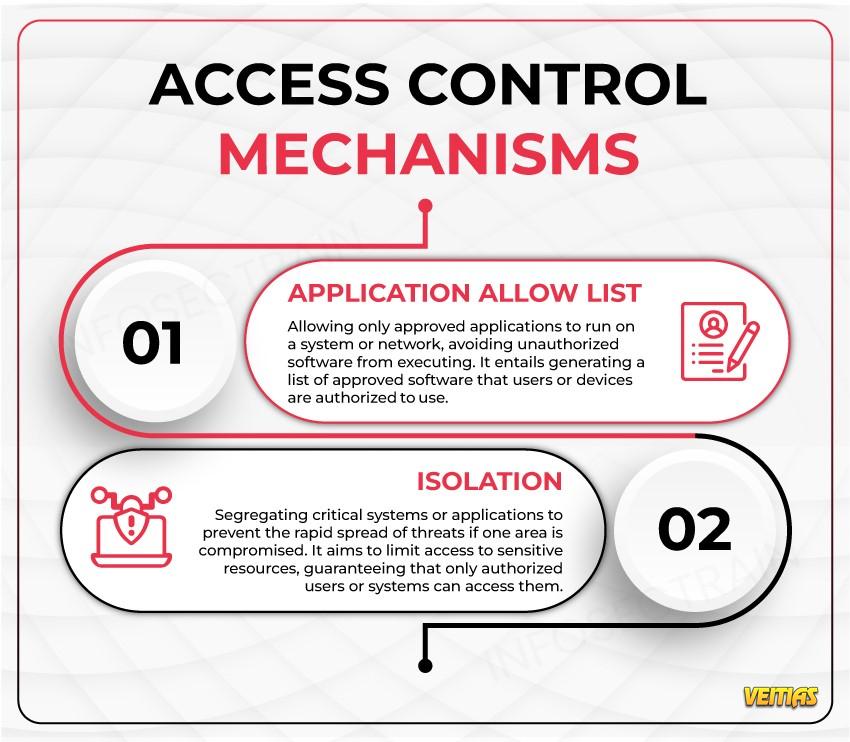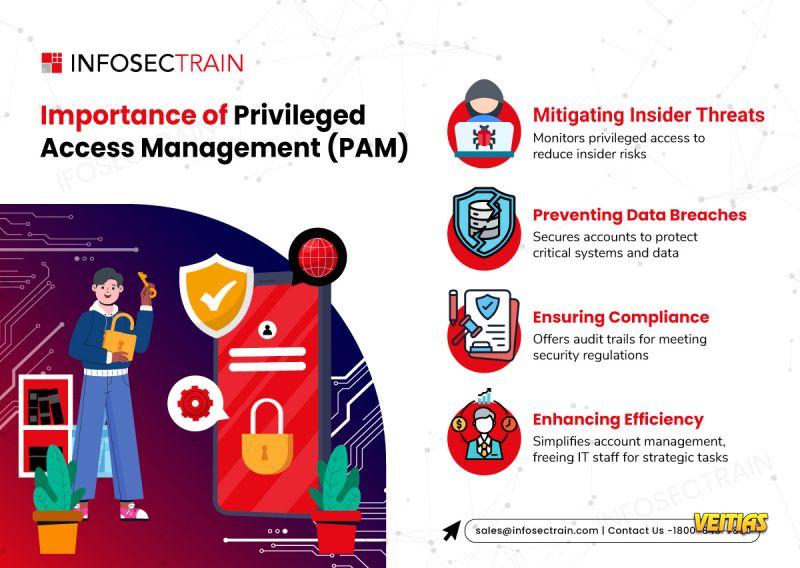𝐓𝐡𝐞 𝐅𝐮𝐭𝐮𝐫𝐞 𝐨𝐟 𝐍𝐞𝐭𝐰𝐨𝐫𝐤 𝐒𝐞𝐜𝐮𝐫𝐢𝐭𝐲 𝐢𝐬 𝐇𝐞𝐫𝐞: 𝐙𝐞𝐫𝐨 𝐓𝐫𝐮𝐬𝐭 & 𝐒𝐃𝐏!
A firewall was enough to safeguard your information in the old days. In a world connected by cloud apps and remote work and bring your own device, trusting anything is a risk.
𝐄𝐧𝐭𝐞𝐫 𝐙𝐞𝐫𝐨 𝐓𝐫𝐮𝐬𝐭: “𝐍𝐞𝐯𝐞𝐫 𝐓𝐫𝐮𝐬𝐭, 𝐀𝐥𝐰𝐚𝐲𝐬 𝐕𝐞𝐫𝐢𝐟𝐲” 𝐢𝐬 𝐭𝐡𝐞 𝐧𝐞𝐰 𝐫𝐮𝐥𝐞 𝐨𝐟 𝐜𝐲𝐛𝐞𝐫𝐬𝐞𝐜𝐮𝐫𝐢𝐭𝐲.
All users, devices, and systems have to prove who they are.
𝐋𝐞𝐚𝐬𝐭 𝐏𝐫𝐢𝐯𝐢𝐥𝐞𝐠𝐞 𝐀𝐜𝐜𝐞𝐬𝐬 is Granted- Just the right amount of access needed.
𝐌𝐢𝐜𝐫𝐨𝐬𝐞𝐠𝐦𝐞𝐧𝐭𝐚𝐭𝐢𝐨𝐧 creates barriers around sensitive assets to limit the potential impact of an attack.
𝐒𝐨𝐟𝐭𝐰𝐚𝐫𝐞-𝐃𝐞𝐟𝐢𝐧𝐞𝐝 𝐏𝐞𝐫𝐢𝐦𝐞𝐭𝐞𝐫 (𝐒𝐃𝐏)-𝐄𝐧𝐚𝐛𝐥𝐞𝐝:
SDP builds on Zero Trust principles by making network resources invisible and establishing secure, one-on-one encrypted connections, rendering your infrastructure virtually invisible to threats
Together, 𝐙𝐞𝐫𝐨 𝐓𝐫𝐮𝐬𝐭 + 𝐒𝐃𝐏 comprise the essential foundation for a robust, adaptable security model suitable for modern, distributed environments.
𝐑𝐞𝐚𝐝 𝐭𝐡𝐞 𝐝𝐞𝐭𝐚𝐢𝐥𝐞𝐝 𝐚𝐫𝐭𝐢𝐜𝐥𝐞 𝐡𝐞𝐫𝐞: https://www.infosectrain.com/blog/zero-trust-vs-software-defined-perimeter/
𝐑𝐞𝐚𝐝𝐲 𝐭𝐨 𝐦𝐚𝐬𝐭𝐞𝐫 𝐙𝐞𝐫𝐨 𝐓𝐫𝐮𝐬𝐭?
Join Infosec Train 𝐂𝐞𝐫𝐭𝐢𝐟𝐢𝐜𝐚𝐭𝐞 𝐨𝐟 𝐂𝐨𝐦𝐩𝐞𝐭𝐞𝐧𝐜𝐞 𝐢𝐧 𝐙𝐞𝐫𝐨 𝐓𝐫𝐮𝐬𝐭 (𝐂𝐂𝐙𝐓) course and become the most wanted cyber security professional in new cyber-defense era!
#ZeroTrust #CyberSecurity #NetworkSecurity #SDP #InfosecTrain #DataProtection #AccessControl #CloudSecurity
A firewall was enough to safeguard your information in the old days. In a world connected by cloud apps and remote work and bring your own device, trusting anything is a risk.
𝐄𝐧𝐭𝐞𝐫 𝐙𝐞𝐫𝐨 𝐓𝐫𝐮𝐬𝐭: “𝐍𝐞𝐯𝐞𝐫 𝐓𝐫𝐮𝐬𝐭, 𝐀𝐥𝐰𝐚𝐲𝐬 𝐕𝐞𝐫𝐢𝐟𝐲” 𝐢𝐬 𝐭𝐡𝐞 𝐧𝐞𝐰 𝐫𝐮𝐥𝐞 𝐨𝐟 𝐜𝐲𝐛𝐞𝐫𝐬𝐞𝐜𝐮𝐫𝐢𝐭𝐲.
All users, devices, and systems have to prove who they are.
𝐋𝐞𝐚𝐬𝐭 𝐏𝐫𝐢𝐯𝐢𝐥𝐞𝐠𝐞 𝐀𝐜𝐜𝐞𝐬𝐬 is Granted- Just the right amount of access needed.
𝐌𝐢𝐜𝐫𝐨𝐬𝐞𝐠𝐦𝐞𝐧𝐭𝐚𝐭𝐢𝐨𝐧 creates barriers around sensitive assets to limit the potential impact of an attack.
𝐒𝐨𝐟𝐭𝐰𝐚𝐫𝐞-𝐃𝐞𝐟𝐢𝐧𝐞𝐝 𝐏𝐞𝐫𝐢𝐦𝐞𝐭𝐞𝐫 (𝐒𝐃𝐏)-𝐄𝐧𝐚𝐛𝐥𝐞𝐝:
SDP builds on Zero Trust principles by making network resources invisible and establishing secure, one-on-one encrypted connections, rendering your infrastructure virtually invisible to threats
Together, 𝐙𝐞𝐫𝐨 𝐓𝐫𝐮𝐬𝐭 + 𝐒𝐃𝐏 comprise the essential foundation for a robust, adaptable security model suitable for modern, distributed environments.
𝐑𝐞𝐚𝐝 𝐭𝐡𝐞 𝐝𝐞𝐭𝐚𝐢𝐥𝐞𝐝 𝐚𝐫𝐭𝐢𝐜𝐥𝐞 𝐡𝐞𝐫𝐞: https://www.infosectrain.com/blog/zero-trust-vs-software-defined-perimeter/
𝐑𝐞𝐚𝐝𝐲 𝐭𝐨 𝐦𝐚𝐬𝐭𝐞𝐫 𝐙𝐞𝐫𝐨 𝐓𝐫𝐮𝐬𝐭?
Join Infosec Train 𝐂𝐞𝐫𝐭𝐢𝐟𝐢𝐜𝐚𝐭𝐞 𝐨𝐟 𝐂𝐨𝐦𝐩𝐞𝐭𝐞𝐧𝐜𝐞 𝐢𝐧 𝐙𝐞𝐫𝐨 𝐓𝐫𝐮𝐬𝐭 (𝐂𝐂𝐙𝐓) course and become the most wanted cyber security professional in new cyber-defense era!
#ZeroTrust #CyberSecurity #NetworkSecurity #SDP #InfosecTrain #DataProtection #AccessControl #CloudSecurity
🔐 𝐓𝐡𝐞 𝐅𝐮𝐭𝐮𝐫𝐞 𝐨𝐟 𝐍𝐞𝐭𝐰𝐨𝐫𝐤 𝐒𝐞𝐜𝐮𝐫𝐢𝐭𝐲 𝐢𝐬 𝐇𝐞𝐫𝐞: 𝐙𝐞𝐫𝐨 𝐓𝐫𝐮𝐬𝐭 & 𝐒𝐃𝐏!
A firewall was enough to safeguard your information in the old days. In a world connected by cloud apps and remote work and bring your own device, trusting anything is a risk.
💡 𝐄𝐧𝐭𝐞𝐫 𝐙𝐞𝐫𝐨 𝐓𝐫𝐮𝐬𝐭: “𝐍𝐞𝐯𝐞𝐫 𝐓𝐫𝐮𝐬𝐭, 𝐀𝐥𝐰𝐚𝐲𝐬 𝐕𝐞𝐫𝐢𝐟𝐲” 𝐢𝐬 𝐭𝐡𝐞 𝐧𝐞𝐰 𝐫𝐮𝐥𝐞 𝐨𝐟 𝐜𝐲𝐛𝐞𝐫𝐬𝐞𝐜𝐮𝐫𝐢𝐭𝐲.
✅ All users, devices, and systems have to prove who they are.
✅ 𝐋𝐞𝐚𝐬𝐭 𝐏𝐫𝐢𝐯𝐢𝐥𝐞𝐠𝐞 𝐀𝐜𝐜𝐞𝐬𝐬 is Granted- Just the right amount of access needed.
✅ 𝐌𝐢𝐜𝐫𝐨𝐬𝐞𝐠𝐦𝐞𝐧𝐭𝐚𝐭𝐢𝐨𝐧 creates barriers around sensitive assets to limit the potential impact of an attack.
🔒 𝐒𝐨𝐟𝐭𝐰𝐚𝐫𝐞-𝐃𝐞𝐟𝐢𝐧𝐞𝐝 𝐏𝐞𝐫𝐢𝐦𝐞𝐭𝐞𝐫 (𝐒𝐃𝐏)-𝐄𝐧𝐚𝐛𝐥𝐞𝐝:
SDP builds on Zero Trust principles by making network resources invisible and establishing secure, one-on-one encrypted connections, rendering your infrastructure virtually invisible to threats
Together, 𝐙𝐞𝐫𝐨 𝐓𝐫𝐮𝐬𝐭 + 𝐒𝐃𝐏 comprise the essential foundation for a robust, adaptable security model suitable for modern, distributed environments.
🔗 𝐑𝐞𝐚𝐝 𝐭𝐡𝐞 𝐝𝐞𝐭𝐚𝐢𝐥𝐞𝐝 𝐚𝐫𝐭𝐢𝐜𝐥𝐞 𝐡𝐞𝐫𝐞: https://www.infosectrain.com/blog/zero-trust-vs-software-defined-perimeter/
☑️ 𝐑𝐞𝐚𝐝𝐲 𝐭𝐨 𝐦𝐚𝐬𝐭𝐞𝐫 𝐙𝐞𝐫𝐨 𝐓𝐫𝐮𝐬𝐭?
👉 Join Infosec Train 𝐂𝐞𝐫𝐭𝐢𝐟𝐢𝐜𝐚𝐭𝐞 𝐨𝐟 𝐂𝐨𝐦𝐩𝐞𝐭𝐞𝐧𝐜𝐞 𝐢𝐧 𝐙𝐞𝐫𝐨 𝐓𝐫𝐮𝐬𝐭 (𝐂𝐂𝐙𝐓) course and become the most wanted cyber security professional in new cyber-defense era!
#ZeroTrust #CyberSecurity #NetworkSecurity #SDP #InfosecTrain #DataProtection #AccessControl #CloudSecurity
0 Σχόλια
0 Μοιράστηκε
1998 Views
0 Προεπισκόπηση







